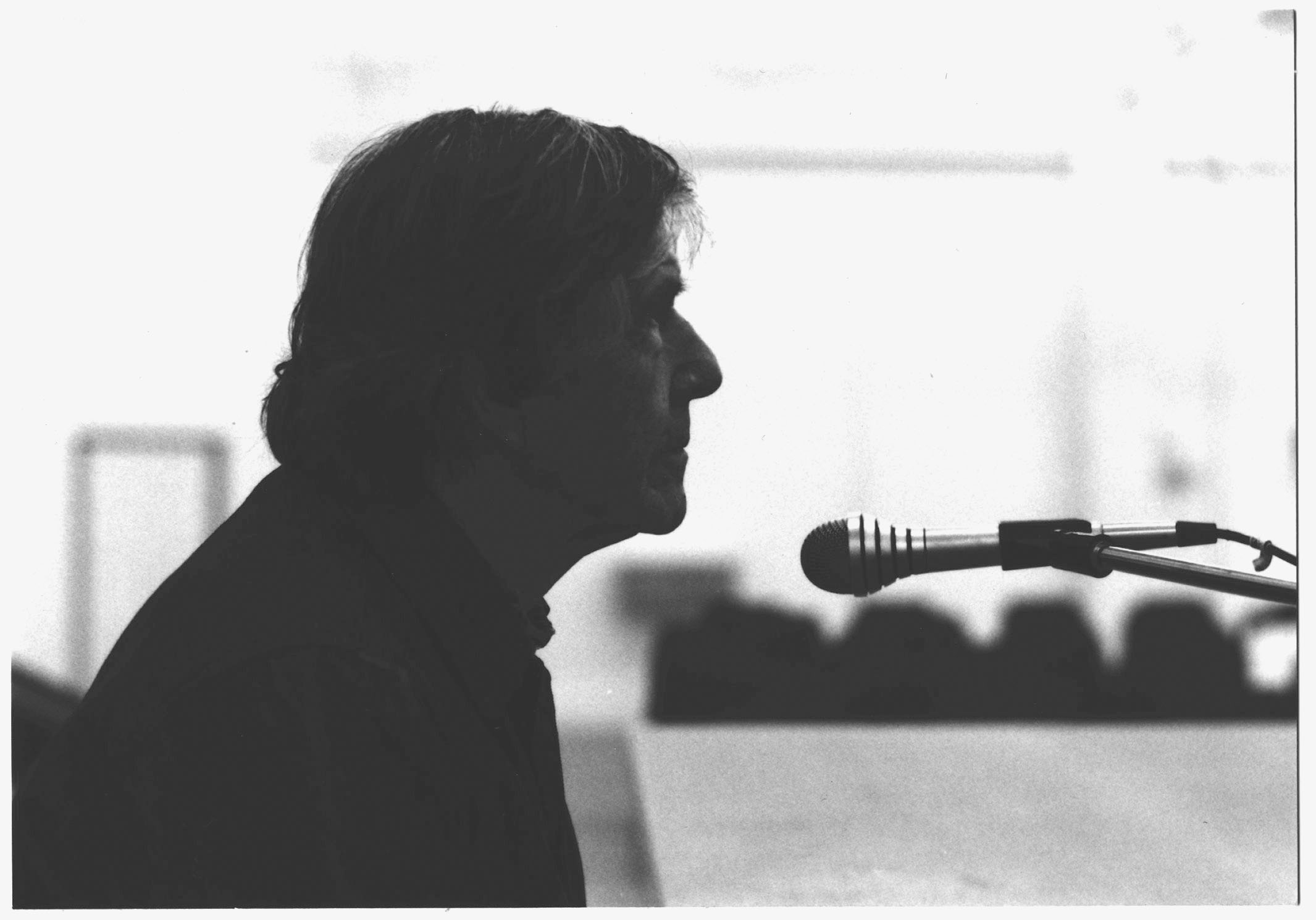WGXC-90.7 FM


All Things Cage: John Cage, Performing "Mureau" at Naropa, January 1979
90.7-FM in NY's Upper Hudson Valley and wgxc.org/listen everywhere
http://www.wgxc.org/
wavefarm.org/listen and 1620-AM at Wave Farm
https://audio.wavefarm.org/transmissionarts.mp3
Hosted by Laura Kuhn, Executive Director of the John Cage Trust.
One author whose work held special interest for John Cage was Henry David Thoreau. As Hans Otte recounts in his beautiful liner notes that accompany the New World Records CD 80540 that captured the collaborative production of Cage’s Mureau and David Tudor’s Rainforest II as performed simultaneously under the auspices of the Pro Musica Nova Festival for Radio Bremen on May 5, 1972,
“Cage was introduced to Thoreau's journals in 1966, was reading his work intensively by 1967, and enrolled as a life member in the Thoreau Society in 1968. It is not difficult to see why he would have been so attracted to this author. Cage may have been drawn to Thoreau's idealism, his dedication to a life of simplicity, his distrust of institutions (including governments), and his reflections on the virtue of “Civil Disobedience”—all told, an anarchic life-view rather similar to Cage's own. In addition, there was Thoreau's way of perceiving, and responding to, music and sound in general. (Cage quotes Thoreau has having described music as “bubbles on the surface of silence”—an aphorism that Cage himself might have coined, and closer to the sensibility of Japanese haiku than New England.) In 1970 Cage composed the piece called Mureau, in which phrases from Thoreau's journals (in particular, passages which touch on the subject of music) are used as the springboard for an elaborate collage. The resultant fabric combines elements of sense and nonsense, as it veers between contextual meaning and a sort of abstract, linguistic vocalise. In discussing Mureau, the composer noted that the work “. . . departs from conventional syntax. It is a mix of letters, syllables, words, phrases, and sentences. I wrote it by subjecting all the remarks of Henry David Thoreau about music, silence and sounds . . . to a series of I Ching chance operations. The personal pronoun was varied according to such operations and the typing was likewise determined.” In fact, the printed text (or score!) of Mureau presents a dazzling, bewildering array of typefaces, with individual letters or letter-groups offset in italics and/or boldface. It offers a uniquely Cageian middle-ground between music and poetry. Significantly, despite the work's striking visual character, it is meant to be read aloud— performed—rather than perceived only as a visual pattern. A further level of ambiguity can be found in the work's title, which links the first syllable of Music to the last of Thoreau. (Ten years later, in a similar vein, Cage would compose Muoyce, or Music- Joyce, subjecting passages of Joyce to even more elaborate chance operations.) In Cage's public readings of Mureau, he explored a number of performance variables—differences in tempo, vocal timbre, pitch, register, and dynamics.”
We listen tonight to an extended excerpt of Cage’s Mureau, as performed at the Naropa Institute in Boulder, Colorado in January 1979.
"All Things Cage" is a weekly program featuring conversations between Laura Kuhn, Director of the John Cage Trust, and Cage experts and enthusiasts from around the world. If you’d like to propose a guest or a topic for a future program, write directly to Laura at lkuhn@johncage.org. She’d love to hear from you.
The late Pulitzer Prize-winning biographer Kenneth Silverman once described his Begin Again: A Biography of John Cage (Knopf, 2012) as the hardest book he’d ever written. This was because, as he put it, pick up any rock and there’s John Cage! Indeed, Cage was not only a world-renowned composer, numbering among his compositions the still notoriously tacet 4’33”, but a ground-breaking poet, a philosopher, a chess master who studied with Marcel Duchamp, a macrobiotic chef, a devotee of Zen Buddhism, a prolific visual artist, and an avid and pioneering mycologist. He was also life partner to the celebrated American choreographer, Merce Cunningham, for nearly half a century, and thus well known in the world of modern dance.
No wonder, then, that nearly everyone who encounters the man or his life’s work has something interesting to say about John Cage!



